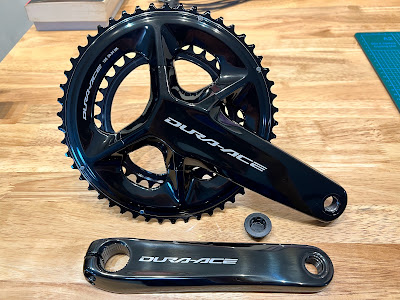The Dahon MuSP is a really nice drop bar folding bike that I assembled back in 2018. It's a rarely used bike, but it is always available as an option if you need to transport a folded drop bar bike to another location.
As shown below, when folded, it can be placed on the backseat of a car, or in the boot if the boot is large enough. On this Dahon MuSP, I chose an inward folding handlepost for a more compact folded size. Most of the time, it works, but it can also be rather awkward during folding.
The problem with the inward folding handlepost with a drop bar is the difficulty of actually folding the handlepost and drop bar, without the saddle or other parts of the bike getting in the way.
Another issue is that the shifters protrude from the folded bike quite significantly. For storage it is fine, but it barely fits in the backseat of the car, as the shifters are already touching the windows.
Folded Dahon MuSP on the backseat of a car. Shifters are right up against the window.
After much consideration, I decided to try a more conventional outward folding handlepost for this drop bar folding bike. Although the folded size would be wider, at least it would be shorter and perhaps easier to place into the car.
New outward folding T-shaped handlepost on the right, just a tiny little bit taller. Shorter ones are practically impossible to find.











